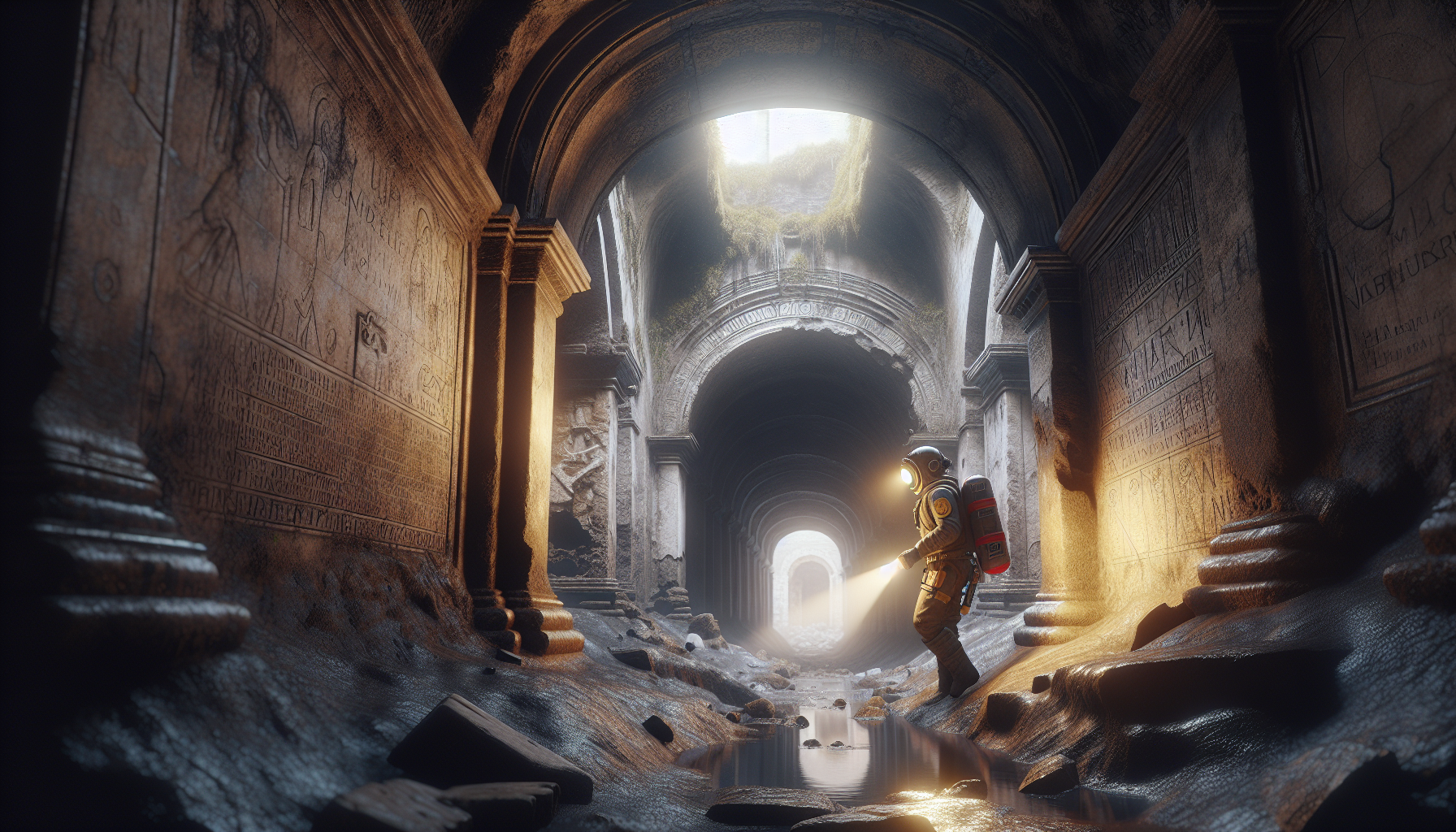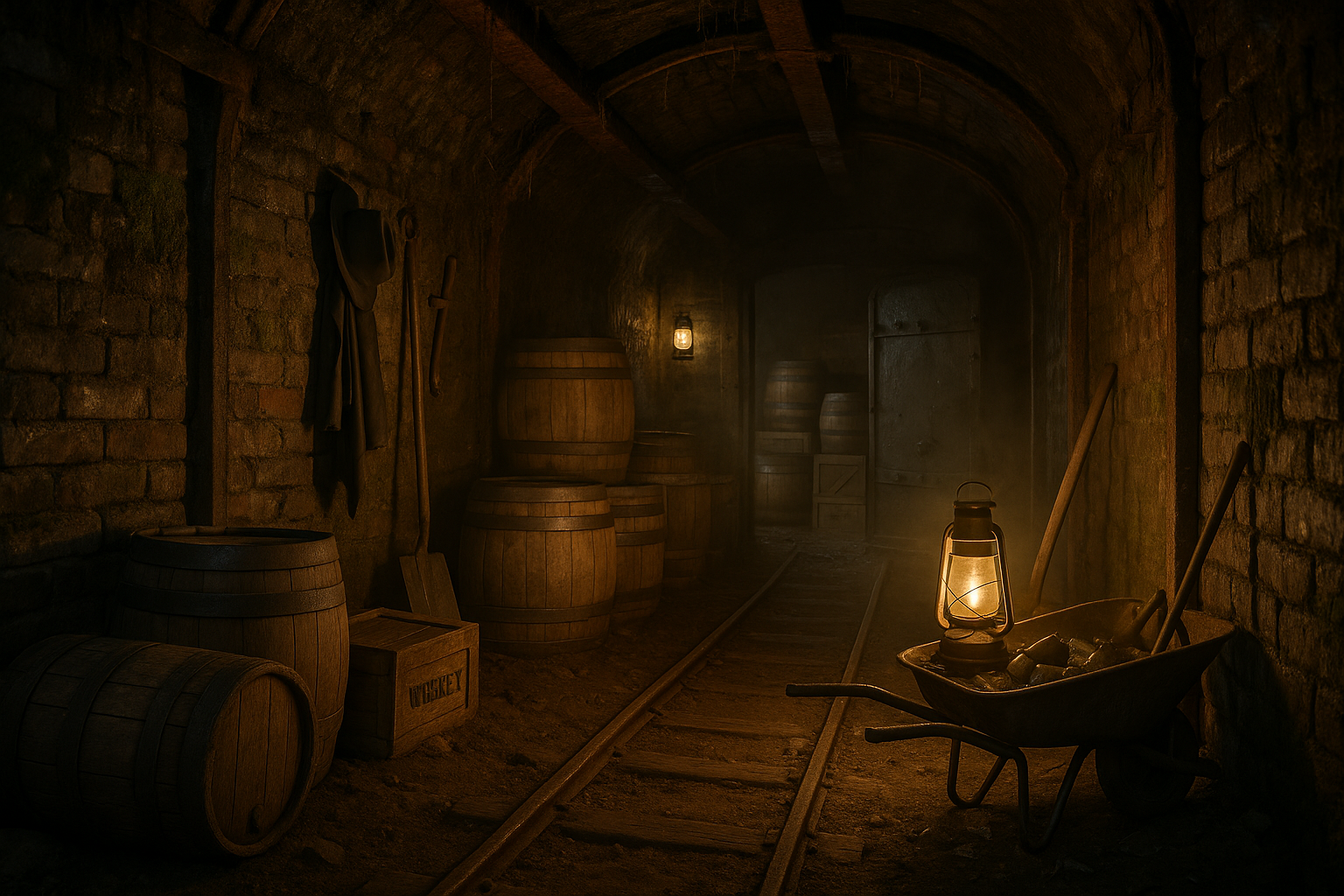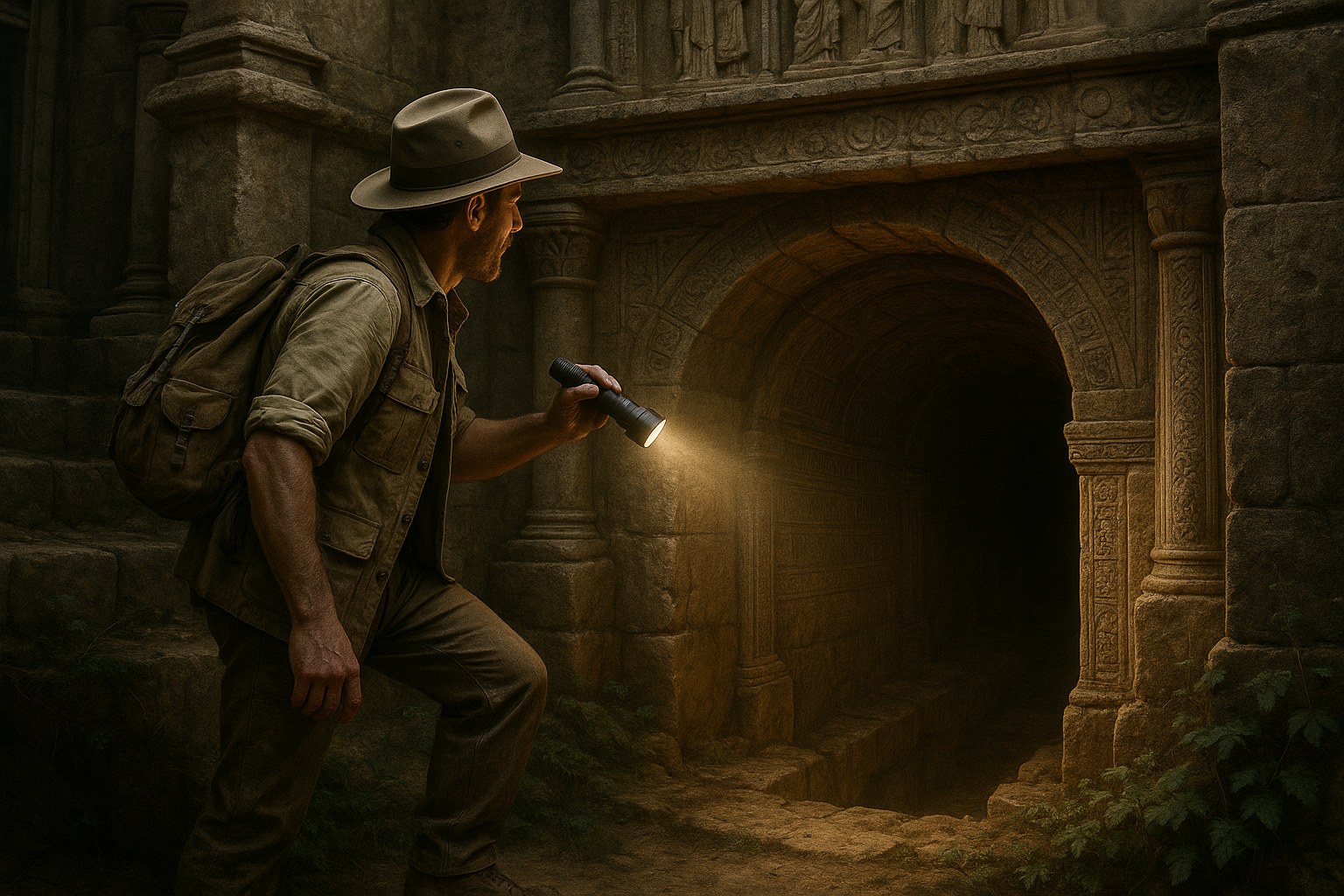Beneath the bustling streets and vibrant life of Naples lies a world shrouded in mystery and wonder, a testament to human ingenuity and the passage of time. 🏛️ As one of the most ancient cities in Europe, Naples is not just a treasure trove of history above ground, but also harbors a fascinating subterranean landscape that few get to witness. From ancient aqueducts to hidden catacombs, the underground world of Naples is a labyrinth of stories waiting to be uncovered. This article will take you on a journey through these hidden marvels, revealing how they shaped the city’s history and continue to influence its modern identity.
The Mysterious Underground of Naples
Naples, a city renowned for its rich history, vibrant culture, and delicious cuisine, hides beneath its bustling streets a labyrinth of subterranean wonders. The underground structures of Naples are a testament to its ancient origins, with layers of history piled upon each other, waiting to be explored. These hidden wonders, ranging from ancient Greek aqueducts to World War II shelters, offer a unique glimpse into the past. For those intrigued by archaeology and history, these subterranean structures provide a captivating journey through time. Whether you are an avid historian or simply someone looking for an off-the-beaten-path adventure, Naples’ underground is a treasure trove waiting to be discovered.
In this article, we will delve into the fascinating world beneath Naples, exploring its historical significance, architectural marvels, and the stories these underground sites have to tell. From the ancient Greek foundations to the secrets hidden during wartime, these subterranean structures offer a unique perspective on the evolution of this vibrant city. Join us as we uncover the hidden wonders below the surface, shedding light on the layers of history that lie beneath the streets of Naples.
The Greek and Roman Roots
Naples’ underground history begins with its Greek origins. The city was founded as Neapolis by Greek settlers in the 8th century BC. The Greeks constructed extensive aqueducts and cisterns to supply water to the growing city, and these ancient water systems laid the groundwork for the complex network of tunnels and chambers that exist today. Exploring these ancient aqueducts offers a glimpse into the engineering prowess of the Greeks and the importance of water management in ancient times.
The Roman period saw further expansion of the underground infrastructure. The Romans, known for their architectural ingenuity, expanded the Greek aqueducts and constructed additional structures, including the famous Roman theatre, parts of which can still be visited today beneath the modern city. The underground tunnels and chambers served multiple purposes, from providing water to acting as secret passages during times of siege. These ancient structures highlight the continuity of use and adaptation over centuries, making them a fascinating study for archaeologists and historians alike.
The table below provides a comparison between Greek and Roman underground structures:
| Aspect | Greek Structures | Roman Structures |
|---|---|---|
| Purpose | Primarily water management | Water management, theaters, secret passages |
| Construction Techniques | Basic engineering techniques | Advanced engineering and architecture |
| Remaining Structures | Limited remains | Extensive remains, including theaters and tunnels |
For a visual exploration of these ancient aqueducts, check out this YouTube video: Ancient Aqueducts of Naples.
The Medieval and Renaissance Periods
As the city transitioned into the medieval period, the underground structures of Naples continued to evolve. The medieval era saw the construction of numerous catacombs, which served as burial sites for early Christians. These catacombs, such as the Catacombs of San Gennaro, are adorned with beautiful frescoes and intricate decorations, showcasing the artistry and religious devotion of the time. The catacombs also served as places of worship and refuge during periods of persecution, highlighting their multifaceted role in medieval society.
The Renaissance brought about a resurgence in architectural innovation, and this was reflected in the underground structures of Naples. The city’s growth and development during this period led to the expansion of existing tunnels and the construction of new ones. The Renaissance period also saw the use of these underground spaces for more diverse purposes, including storage and secret passageways for the aristocracy. These subterranean structures played a crucial role in the social and economic life of Naples, providing a unique insight into the daily lives of its inhabitants.
To gain a deeper understanding of the catacombs, explore the following video from the ‘History of Naples’ channel on YouTube.
World War II and the Underground Shelters
The 20th century brought new challenges to Naples, as the city became a target during World War II. The underground structures, which had been used for centuries for various purposes, were transformed into air raid shelters. These shelters provided refuge for thousands of Neapolitans during the bombings, and many stories of resilience and survival emerged from these dark times.
Exploring these wartime shelters reveals poignant stories of courage and community. The walls of the shelters are adorned with graffiti and messages left by those who sought refuge there, offering a haunting yet fascinating insight into the human experience during war. These underground spaces are a testament to the resilience of the Neapolitan people and their ability to adapt and survive in the face of adversity.
For those interested in this period of history, the video “Naples Underground Shelters of WWII” on the ‘War History Online’ channel provides a moving account of life in the shelters.
As we continue to uncover the hidden wonders of Naples’ underground, it is clear that these structures are not just relics of the past, but living monuments to the city’s resilience, innovation, and enduring spirit. Whether you are a history enthusiast or a curious traveler, the subterranean world of Naples offers a journey through time that is both educational and inspiring.
The Architectural Marvels Below
The architectural ingenuity of the underground structures in Naples is a marvel to behold. From the intricate design of the Greek and Roman aqueducts to the grandeur of the medieval catacombs, each structure tells a story of its time. The engineering skills required to construct these subterranean wonders demonstrate the advanced knowledge and creativity of the builders throughout history. The tunnels and chambers are not only functional but also aesthetically pleasing, with decorative elements that reflect the artistic sensibilities of their respective periods.
One of the most remarkable aspects of these structures is their adaptability. Over the centuries, they have been repurposed to meet the changing needs of the city. This adaptability is a testament to the foresight and vision of their creators, who designed them to be versatile and enduring. Today, these underground spaces continue to serve a variety of functions, from tourist attractions to venues for cultural events.
The following video, “Architectural Wonders of Naples Underground” from the ‘Architecture Digest’ channel, provides an insightful look at the design and construction of these structures.
The Ongoing Legacy of Naples’ Underground
The underground structures of Naples are not just historical artifacts; they are a living part of the city’s culture and identity. Efforts to preserve and promote these subterranean wonders have gained momentum in recent years, with initiatives aimed at restoring and maintaining the sites for future generations to enjoy. These efforts highlight the importance of preserving cultural heritage and the role that these structures play in the collective memory of the city.
The underground world of Naples continues to inspire artists, historians, and architects, serving as a source of inspiration for new creative endeavors. The interplay between the past and present is evident in the way these structures are used today, whether as settings for art exhibitions, film shoots, or historical reenactments. This ongoing legacy ensures that the stories of Naples’ underground will continue to be told, connecting the past with the present and future.
Explore the underground wonders of Naples through this engaging video: The Legacy of Naples Underground.
Planning Your Visit to Naples’ Underground
If you’re planning a visit to Naples, exploring its underground structures should be at the top of your itinerary. These sites offer a unique perspective on the city’s history and culture, providing an unforgettable experience for travelers. Many tours are available, each offering a different focus, from archaeological explorations to historical narratives. Whether you’re interested in the ancient aqueducts, medieval catacombs, or wartime shelters, there’s a tour to suit your interests.
- Check tour availability and book in advance to ensure your spot.
- Wear comfortable shoes, as some tours involve extensive walking and climbing.
- Consider taking a guided tour for a more in-depth understanding of the sites.
For a preview of what to expect, watch the video “Exploring Naples Underground” on the ‘Travel Channel’ YouTube page.
As you explore the hidden wonders beneath Naples, you’ll discover a world that is as intriguing as it is educational. Each structure tells a story, and together they paint a picture of a city that has evolved over millennia. Whether you’re a history buff, an architecture enthusiast, or simply curious about what lies beneath the surface, Naples’ underground is a journey worth taking.

Conclusion
In conclusion, the journey through the subterranean wonders of Naples reveals a hidden world that intertwines history, culture, and engineering marvels. Throughout this article, we explored the rich tapestry of underground structures that lie beneath the vibrant streets of Naples, uncovering a fascinating narrative that spans centuries. From ancient Greek aqueducts to Roman tunnels, and from WWII bunkers to catacombs, each layer of this underground city tells a unique story of resilience, ingenuity, and cultural evolution.
We began our exploration by delving into the origins of Naples’ subterranean structures, highlighting the ancient Greek and Roman influences that laid the groundwork for the city’s complex underground network. The aqueducts, in particular, not only served practical purposes in ancient times but have also become a testament to the advanced engineering skills of early civilizations. As we ventured further into the depths, the Roman tunnels and chambers came to life, showcasing their role in transportation and commerce, which were vital to the city’s prosperity.
The journey continued as we examined the adaptation of these underground spaces during more turbulent times. The transformation of ancient structures into WWII bunkers was a poignant reminder of human resilience in the face of adversity. These shelters provided refuge and safety to countless individuals during the bombings, preserving lives and history alike. This dual nature of the underground world, serving both as a sanctuary and a witness to history, adds depth to our understanding of Naples’ past.
The catacombs of Naples, with their intricate frescoes and sacred spaces, offered another layer of exploration. These subterranean burial sites, which date back to early Christianity, illustrate the city’s spiritual and religious evolution. The artwork and architecture found within the catacombs are not only beautiful but also serve as cultural markers that highlight the city’s religious significance throughout history.
Moreover, we discussed the modern-day initiatives to preserve and promote these underground wonders. The efforts to make these spaces accessible to the public through guided tours and conservation projects are crucial in maintaining their integrity and educating future generations about their historical importance. These initiatives also support local tourism, providing economic benefits while fostering a deeper appreciation for Naples’ rich cultural heritage.
The subterranean structures of Naples are not just architectural and historical marvels; they are living entities that continue to shape the identity of the city and its people. They invite us to reflect on the human capacity for creativity and resilience, even in the face of challenges. The hidden wonders beneath Naples remind us of the interconnectedness of past and present, urging us to cherish and protect these invaluable cultural assets.
As we conclude this exploration, it is evident that the subterranean world of Naples holds a wealth of untapped knowledge and inspiration. These structures are more than just remnants of the past; they are a testament to the enduring spirit of a city that has continuously adapted and thrived across millennia. By uncovering these hidden wonders, we gain a deeper appreciation for the complexities of history and the richness of human achievement.
We encourage you, dear reader, to embark on your own journey of discovery. Whether by visiting Naples and experiencing these underground wonders firsthand or by delving into further research, there is always more to learn and explore. The stories of Naples’ subterranean world are waiting to be uncovered, and your curiosity can play a part in preserving this legacy for future generations.
Feel free to share this article with friends and family, sparking conversations about the hidden treasures beneath Naples. Your engagement not only helps spread awareness but also contributes to the ongoing efforts to preserve and celebrate these cultural wonders. Together, we can ensure that the stories etched in the stones beneath Naples continue to inspire and educate for years to come.
**References and Further Reading:**
1. “Naples Underground” – Explore the official site of Napoli Sotterranea for tour information and historical insights: Napoli Sotterranea
2. “Catacombs of San Gennaro” – Discover the history and cultural significance of the catacombs: Catacombe di Napoli
3. “The Hidden History Beneath Naples” – National Geographic’s exploration of Naples’ underground wonders: National Geographic Article
4. “The Subterranean City: Beneath the Streets of Naples” – A comprehensive study on the engineering and history of Naples’ underground structures: Research Article
Let us celebrate the stories, structures, and spirit that define the underground world of Naples, inviting others to share in this remarkable journey through time and beneath the surface.
Toni Santos is a visual storyteller and artisan whose work explores the quiet power of what lies beneath. With a deep fascination for subterranean and hidden architecture, Toni uncovers the layers, voids, and forgotten spaces that shape our built environment from the shadows.
His art is a journey through the unseen — from ancient underground chambers to sealed passageways, service tunnels, and foundations buried in time. Each creation tells a story of silence, secrecy, and structure — revealing how absence and concealment can be just as meaningful as what’s visible above ground.
Whether working through visual compositions, architectural studies, or symbolic handcrafted pieces, Toni captures the soul of hidden spaces. His work bridges art and archaeology, blending design with discovery. Trained in visual design and traditional techniques, Toni creates with intention. His pieces don’t just depict — they interpret, inviting viewers to rethink what space, memory, and architecture mean when they’re hidden from view.
As the creative force behind Vizevex, Toni shares this perspective through curated visual narratives, symbolic collections, and interpretive essays that give voice to the quiet geometries beneath our feet.
His work is a tribute to:
The mystery of spaces built to be forgotten
The symbolism embedded in foundations, voids, and passageways
The timeless connection between human intention and hidden structure
Whether you’re an artist, an urban explorer, or someone fascinated by the unseen frameworks that support our world, Toni invites you into a realm where architecture becomes myth — one corridor, one layer, one buried story at a time.





